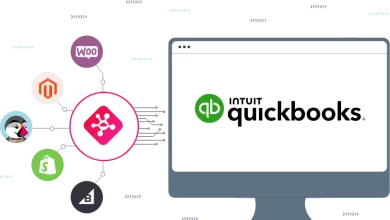Where are we with React Native in Web, Windows, and macOS?
Find out the current state of React Native for web, windows, and macOS along with its history and benefits.



Application development is a result of the emergence of disruptive technologies. It is now eyed as a primary marketing aspect for every product and service company. App development initially targeted hand-held devices. With time, the service providers realized they need to get hold of the web as well as the mobile to get the highest level of penetration into demographics. Now, the point of discussion has shifted from, “should we own an application?” to “which platforms should we target with the application?” And here comes one of the toughest questions in application development. The app developers need to cover different operating systems. At the same time, they cannot ignore the far-fetched reach of a responsive web app. It would be a great idea to be able to pursue every aspect, but that churns out huge development and maintenance costs. So the difficult question here is, “What is the best solution for developing a cost-effective cross-platform application?” Choosing an application development framework that supports all of these goals can be an effective answer. React Native development is gaining prominence on these grounds.
What is React Native?
React native is a JavaScript-based application development framework that is used to develop mobile applications. It was started as an open-source project by Facebook in 2015. The rich feature set compelled many companies to get into React Native application development. Many leading companies including Facebook and Instagram have used React Native for application development.
History
Facebook used HTML5 to develop a mobile web page for every device. This effort struggled in terms of UI and performance. The solution did not turn out to perform in long term. In 2013, Jordan Walke, a Facebook developer used JavaScript to develop UI elements. This concept was groundbreaking. A Hackathon was organized to further test the potential of developing a mobile application using JavaScript. This gave birth to React Native. At first, it was launched for iOS. Gradually, Facebook brought in Android support and finally launched it in 2015. React Native emerged as the second biggest project on GitHub just after three years of its launch.
Why is React Native So Popular?
One of the primary reasons for the immense popularity of React Native is its use of the JavaScript library. JavaScript library was also popular when React Native was launched. So, it automatically gained popularity amongst developers. The second reason is that the React Native Framework brought in many great features for UI development which are loved by the front-end developers. The third reason can be the framework and its features. React Native developers need to write the code only once. They can use it on both – Android and iOS. This has saved considerable time and effort for the developers as well as the organizations.
React Native is a great cross-platform application development framework that offers:
- Wider audience
- Consistent performance across different platforms
- Quicker development
- Cost-efficiency
These are some of the features that make React Native applications immensely popular.
Where Do We Stand?
React Native is open source and the release is also open source for everyone to access. There is a release train in the react-native-releases repository in GitHub. The React Native 0.70 was release in September 2022 which is the latest version. The year 2022 started with the release of React Native 0.67 whichcame with many improvements. Then in release 0.68, we saw some breaking changes including:
- React Native updated to Node 16, compelling the React developers to use the
- Node 14 and higher versions
- Addition of Android Gradle Plugin
- Removal of fallbackResource from the iOS API named RCTBundleURLProvider
A new architecture with TurboModule system and Fabric Renderer was add. The React Native 0.69 came with many improvements to support this new architecture. Bundles Hermes and React 18 support have been the two major additions to this version. There were many other changes including c++17 support and the addition of the hotkeysEnabled option.
In the latest 0.70 version, the focus was on Hermes which added a lot of value to React Native. It has been developed to benefit resource-constrain devices. The Hermes engine can compile the source code of JavaScript to bytecode ahead of time, unlike other engines. Hermes has been release as the default engine in the 0.70 version. In December 2022, an experimental cross-platform pointer API was introduced. Moving ahead, the focus will be on improving the framework’s performance for desktop, VR, and the web.
React Native for Web
It is time to get rid of the common misconception that React Native is only for mobile application development. React Native web is a reality. It can be use for existing as well as new apps. Users can also use it to develop multi-platform apps along with web apps, The developers can find all the React Native core components for web development. The components for the web come with browser-compatible implementations. For instance, the developers will get to use the DOM-based version of the <view> component of React Native that can be used to render to a <div>. ReactJS development framework has emerged as one solution for every kind of application development. The developers can use HTML tags to translate the required React Native primitives to DOM language, boosting the adoption of React Native for Web application development.


Benefits of using React Native for web
We can bet on two main reasons behind the growing popularity of React Native web.
- When you create a web app with React Native, you get access to high-quality web interfaces that help you develop adaptive web UI using JavaScript. The native-like support, multiple input modes, RTL layout support, and integration with React Dev lead to seamless UI development.
- The React developers need to write once and render anywhere they want allowing them to write new components for native and web apps without re-writing.
Major bug fixes and planned changes
In the 0.18 release for React Native web, many bug fixes have been made. Fixes are done for
- Shortform and long-form duplication
- Focus ring display on different elements including Switch and CheckBox
- Href navigation for Touchables and Pressables
- Linking.OpenURL support for the target value
Many new features have been added
- Nesting of localized LTR/RTL layouts by setting the land or dir prop for a component
- Dynamically switching of localized LTR/RTLlayouts in runtime
- Addition of useLocaleContext as the new export API
- Support for rendering for shadow boots and multiple windows
- Extraction of static CSS
React Native for Windows + macOS
Before heading any further, let us take a look at the history of React Native for Windows and iOS. The React Native windows + macOS wasdeveloped in 2015. Since then, there have been continuous releases with bug fixes and improvements. React developers can now use React Native for Windows desktop app development. The idea behind React Native windows is to use the tools, architecture, languages, and every other component of React Native for windows application development. Very similar to Windows, React Native for macOS starts development on the actual React Native project with the desktop environment of mac into consideration. React Native for windows + macOS framework enables the developers to build cross-platform apps. Many top applications such as Xbox and MS Office have successfully used React Native for Windows and macOS for application development.macOS for iOS also gets robust support with every new release.
Benefits of using React Native for Windows + macOS
There are many benefits of using React Native for mobile apps and Windows desktop app development.
- The React developers can use the native modules to invoke standard React Native controls and components. The developers can use features like ‘live reload’ to test their implementations just as they do in web applications.
- A single codebase can be use to run on both operating systems – macOS and Windows. Even with two React Native projects for two different application developments, the shared UI components exist in the top layer. This considerably reduces the development and maintenance time for both applications.
- The large developer community for support cannot be ignore. The React and React Native communities constantly offer support for React Native Windows and macOS development.
Bug Fixes and Planned Features
Version 0.70 is about new features. There are quite a few fixes which are:
- Fix for catalyst
- Enabling the new React JSX Transform
- Removal of reactnativeutilsjni
Besides the changes, many dependencies have been upgrade. The major highlights of the release are:
- Using Hermes as the default engine
- New unified configuration for Codegen
- Auto-linking for new architecture libraries in Android
- Full CMake support to configure android builds
Conclusion
React Native is a great choice for developing cross-platform web and mobile applications for different platforms. React Native allows the developers to share the codebase and business logic on web and native applications, bringing in great visual consistency. Development options like ‘fast refresh’ allow the developers to instantly see their changes in the application. This ultimately results in higher productivity and better user experience. React Native is a very progressive language where new releases keep coming up with new features and bug fixes. The Contributor Summit 2022 has opened new channels of knowledge sharing and collaboration to bring up something new and innovative in React Native.
The upcoming developments are expect to be on the ‘many platforms vision’ which aims to build beyond mobile. An increase in investments in Desktop, Web, and VR only guarantees new releases with better support for platforms with hardware differences. Looking at the ascending graph of developments, one can conclude that using React Native for application development would prove to be a worthy choice. There have been many exciting changes in 2022 and the new releases in the coming years are worth a wait.






